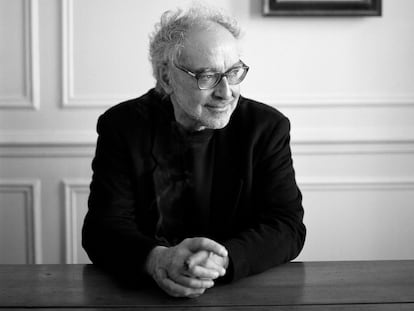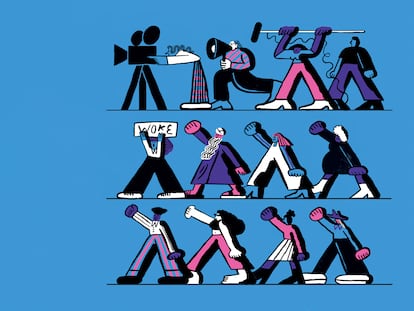Jean-Luc Godard like you’ve never seen him: The pioneer of cinema’s hidden passion for visual arts
Oporto’s Serralves Foundation has opened an exhibition on the previously unknown artwork of the legendary French New Wave filmmaker
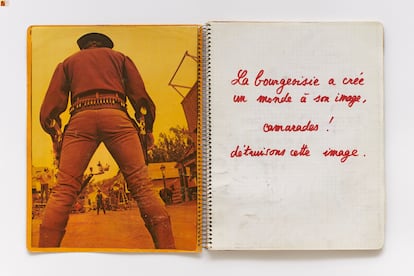

Jean-Luc Godard was known for his ironic subversion throughout his life. As a teenager, he signed his drawings as IAM and even gifted his parents a graphic notebook titled Le Cercle de Famille. Impressions d’ensemble (The Family Circle. General Impressions), which humorously mocked bourgeois life. And there was nothing more bourgeois than having Swiss banker grandparents, as Godard did. While he is famously credited with shaping the French New Wave and establishing himself as a young rebel who would eventually wield cinema as a political weapon, it may come as a surprise that he also channeled his creativity into graphic work.
This previously unknown side of Godard is explored in the exhibition Tendo em linha de conto os tempos atuais: Obra plástica de Jean-Luc Godard (Set in the Present Day: Visual Work by Jean-Luc Godard), currently on display at the Casa do Cinema Manoel de Oliveira at the Serralves Foundation in Porto, Portugal, until May 18. “What we show here is a multifaceted Godard, a complete artist who was not only a filmmaker but also a visual artist, revealing the close relationship between cinema and the visual arts,” says António Preto, director of the Casa do Cinema Manoel de Oliveira.
In the exhibition catalog, members of the Ô Contraire! collective — which includes four of Godard’s former collaborators who also curated the show — acknowledge that he would have rejected being defined as a “visual artist.” Instead, they argue that referring to him as a “painter” or “graphic designer” would be more accurate, though still simplistic. “He was an artist in every sense of the word,” they say.
Godard’s sense of humor, evident from the age of 17 and persisting throughout his life, is showcased in the collection of 24 digital self-portraits displayed at the entrance of the exhibition. These portraits highlight the filmmaker’s ability to create visual poetry, even during his later years when he faced significant physical challenges. The selfies, which serve as a playful and vibrant starting point for his visual experiments, also demonstrate Godard’s embrace of technological advancements, from video to cutting-edge smartphones, says Preto. One image features his hand holding the key to his home in Rolle, Switzerland, the place where he chose to end his life in 2022 via assisted suicide, a legal right in his country. At the time, Godard was 91 years old and suffering from several debilitating ailments.
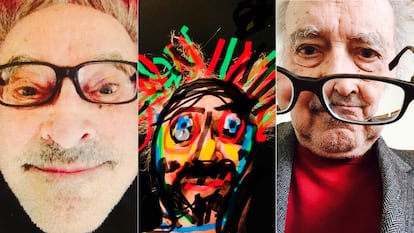
To organize a collection of Jean-Luc Godard’s graphic work for exhibition, his friends and family searched through his various homes. The show was curated by the Ô Contraire! collective, which consists of producer Fabrice Aragno, screenwriter Jean-Paul Battaggia, film historian and critic Nicole Brenez, and Paul Grivas, Godard’s nephew and the director of photography on his film Film Socialisme (2010). The exhibition in Porto serves, in many ways, as a precursor to the kind of activities that the Godard Foundation aims to promote in the future.
One of the oldest works featured in the exhibition is a drawing Godard gave to his sister Veronica, signed as IAM, “perhaps a pseudonym derived from the English phrase ‘I am,’” suggests Preto. From this early period also come a portrait of Godard’s father, Paul, several paintings where he experimented with various techniques, and illustrations accompanying a letter he wrote at the age of 17 to Paul Valéry, a friend of his grandfather Julien-Pierre Monod. His early interest in combining images and texts is evident, a trait that would later appear in both his professional and personal notebooks. Also on display is Godard’s first screenplay, Aline, written between 1948 and 1949, once thought to be lost.
The exhibition also highlights the mutual admiration between Godard and Portuguese director Manoel de Oliveira. It features a reproduction of a conversation between the two, published in Libération in September 1993, when Godard released Oh, Woe Is Me and Oliveira’s Abraham’s Valley premiered in Parisian theaters. During their conversation, both confess their shared fear of not being able to make another film. The Portuguese auteur shares his admiration for Godard’s Germany Year 90 Nine Zero (1991), stating: “What I like is the clarity of the signs combined with their profound ambiguity. It is also what I like in cinema in general: a saturation of magnificent signs bathed in the light of the absence of explanation.”
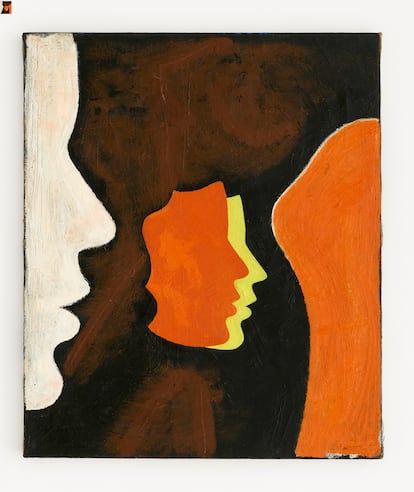

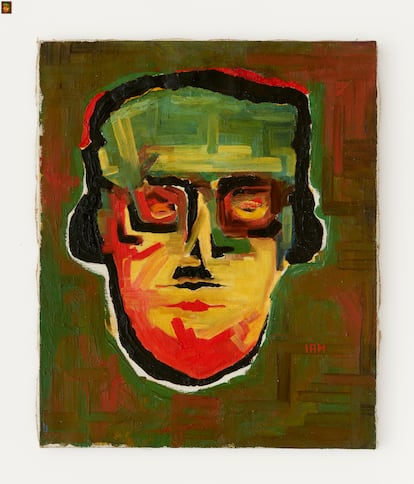
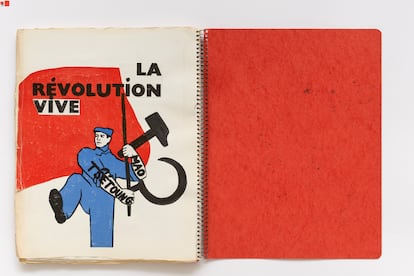
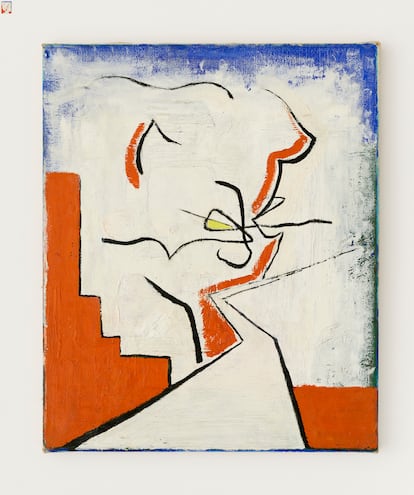
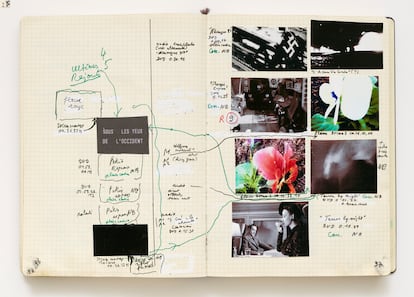
The bond between the two filmmakers played a key role in the fact that, years later, Godard agreed to the Serralves Foundation’s proposal to dedicate an exhibition to him. But he passed away before the plans could come to fruition. The current exhibition also includes works by Godard’s friends, relatives, and collaborators, alongside his work tools and numerous notebooks that provide insight into his personal thoughts, moods, and political awareness. One such notebook, filled with sentimental reflections about his partner, actress Anne Wiazemsky, contains the line: “When the weekend becomes the end of the world.” Also displayed is the La Chinoise notebook, related to his 1967 film starring Wiazemsky, which features a Mao Zedong quote. The 1960s marked Godard’s radical, Maoist ideology, and in one notebook from this period, he reflects on photography as a bourgeois tool. Next to an image of a cowboy turning his back on a gunfight, he wrote: “The bourgeoisie created a world in its image. Comrades, let us destroy that image.”
Visitors will also encounter post-production notebooks containing collages and notes on Hail Mary, as well as those for Trailer of the Film That Will Never Exist: “Phony Wars,” a posthumous work that became a new symbol of rebellion. “YSL had commissioned a film from him, and he gave them the notebook, claiming it was the film. Eventually, it had to be accepted, and the matter was resolved by turning each page of the notebook into an image. What it came down to was deciding how long each one lasted,” says Preto.
On one wall, there’s a reproduction of the graphic assemblage that Godard hung in front of his desk, featuring photos of his dog, a painting by Matisse, and one of Godard’s early works as a young nonconformist, among others. The exhibition also includes an installation where images from The Image Book’s creation process are projected onto veils, accompanied by Godard’s voice. In parallel, the Casa do Cinema will screen a retrospective of Godard’s films — he directed over 100 in his lifetime — along with a series of talks by curators, art historians, and film critics.
Sign up for our weekly newsletter to get more English-language news coverage from EL PAÍS USA Edition
Tu suscripción se está usando en otro dispositivo
¿Quieres añadir otro usuario a tu suscripción?
Si continúas leyendo en este dispositivo, no se podrá leer en el otro.
FlechaTu suscripción se está usando en otro dispositivo y solo puedes acceder a EL PAÍS desde un dispositivo a la vez.
Si quieres compartir tu cuenta, cambia tu suscripción a la modalidad Premium, así podrás añadir otro usuario. Cada uno accederá con su propia cuenta de email, lo que os permitirá personalizar vuestra experiencia en EL PAÍS.
¿Tienes una suscripción de empresa? Accede aquí para contratar más cuentas.
En el caso de no saber quién está usando tu cuenta, te recomendamos cambiar tu contraseña aquí.
Si decides continuar compartiendo tu cuenta, este mensaje se mostrará en tu dispositivo y en el de la otra persona que está usando tu cuenta de forma indefinida, afectando a tu experiencia de lectura. Puedes consultar aquí los términos y condiciones de la suscripción digital.
More information
Archived In
Últimas noticias
All the effects of gentrification in one corner of Mexico’s Colonia Roma
Palestinian reporter Youmna El Sayed: ‘My family told me I had to choose between being a journalist or a mother’
The new language of the workplace: Knowing how to ask AI questions is more important than using it
Russell Tovey: ‘I was advised many times not to come out, I don’t think there was many people who’d done that — and I feel really proud that I’m one of those that did’
Most viewed
- Christian Louboutin: ‘Young people don’t want to be like their parents. And if their parents wear sneakers, they’re going to look for something else’
- The low-cost creative revolution: How technology is making art accessible to everyone
- US sanctions against jailed cartel leader ‘El Marro’ highlight Mexico’s lack of control over its prisons
- Liset Menéndez de la Prida, neuroscientist: ‘It’s not normal to constantly seek pleasure; it’s important to be bored, to be calm’
- Cartels in Mexico take a leap forward with narco-drones: ‘It is criminal groups that are leading the innovation race’
